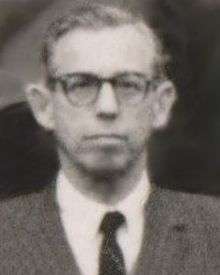Milton S. Plesset
| Milton Spinoza Plesset | |
|---|---|
 Copenhagen 1963 | |
| Born |
February 7, 1908 Pittsburgh, Pennsylvania |
| Died | February 19, 1991 (aged 83) |
| Nationality | United States |
| Fields | Fluid dynamics |
| Institutions |
University of Rochester California Institute of Technology |
| Alma mater |
University of Pittsburgh Yale University |
| Doctoral advisor | John Archibald Wheeler |
| Doctoral students |
Andrea Prosperetti Chris Whipple Norman Zabusky |
| Known for |
Rayleigh-Plesset equation Møller–Plesset perturbation theory |
| Notable awards | ASME Fluids Engineering Award[1] |
Milton Spinoza Plesset (7 February 1908 – 19 February 1991) was an American applied physicist who worked in the field of fluid mechanics and nuclear energy. He was elected to the National Academy of Engineering in 1979 for his fundamental contributions to multiphase flows, bubble dynamics, and safety of nuclear reactors.[2][3] Plesset served as Professor of Engineering Science at California Institute of Technology during 1951 to 1978. Notable scientists Andrea Prosperetti and Norman Zabusky finished their doctoral work under Plesset's guidance.
He with Christian Møller are known for the Møller–Plesset perturbation theory.[4] The Rayleigh-Plesset equation describing the dynamics of a bubble in an infinite body of fluid is also named after him.
Education and work
Born in Pittsburgh, Pennsylvania, Plesset received his bachelor's degree from University of Pittsburgh in 1929 and a Ph.D. from the Yale University in 1932. Soon after his Ph.D. Plesset joined Caltech and worked with Robert Oppenheimer. Together, they undertook a theoretical study of positron using Dirac equation in quantum electrodynamics to show how electron-positron pairs were formed.[2]
References
- ↑ Fluids Engineering Award by American Society of Mechanical Engineers
- 1 2 Memorial Tributes By National Academy of Engineering. National Academy of Engineering. 2008-12-31.
- ↑ Dr. Milton S. Plesset at National Academy of Engineering
- ↑ Møller C., Plesset M. S. (1934). "Note on an Approximation Treatment for Many-Electron Systems". Physical Review. 46 (7): 618–622. Bibcode:1934PhRv...46..618M. doi:10.1103/PhysRev.46.618.